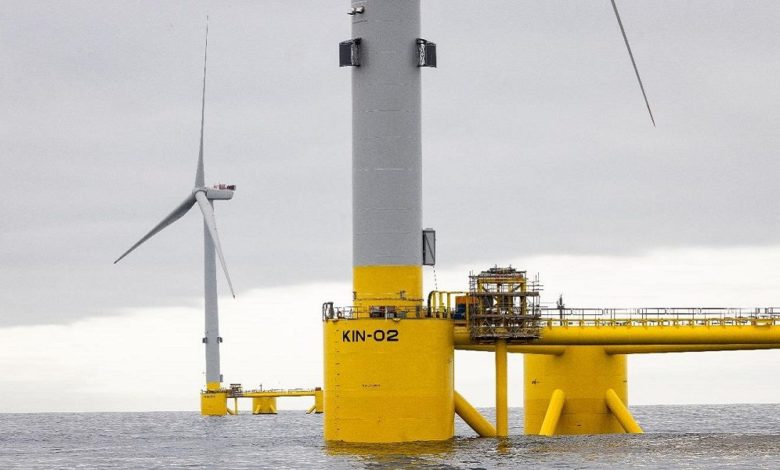Floating offshore wind challenged by supply chain conundrum

Floating foundation selection involves comparing a combination of technical and operational factors. Arguably the operational factors will have a bigger impact throughout the asset’s lifecycle, says Mark Goalen, director of offshore engineering at Houlder.
While the offshore wind market enjoyed its best year yet in 2021, with 21GW of capacity commissioned, only 57MW of that was floating wind, highlighting the industry infancy. As with most nascent technologies, barriers to full commercialisation exist, and the industry is still to overcome key supply chain constraints.
For ports that will support a new development: Location, infrastructure, water depth, available space for fabrication, and storage are all key. Taking the UK as an example, current options are limited. Individual ports do have plans to invest, but none will be sufficient to cover all options, and so there is a risk that significant parts of the manufacture could go to Europe or Asia.
Lack of port infrastructure seems to be driving the choice of concrete over steel foundation. It would appear easier to manufacture concrete structures because it requires a less skilled workforce. You only need the moulds and raw materials, and not the specialised welding equipment or qualified welders. Steel can be prefabricated elsewhere and assembled, but that builds in additional fabrication risk and requires additional transport of large components increasing costs and carbon footprint.
Operations and maintenance (O&M) is an even bigger challenge facing the industry. Floating foundations currently have been towed back to port for maintenance and repairs. However, this cannot be viable or economical as wind farms are located further offshore and distance to O&M ports increases. The ability to conduct O&M on location must be found, because the risk and costs associated with connection and disconnection and transportation of the wind turbine generator (WTG) will prove too high over time.
A combination of modifying the WTG, as well as developing the tools and vessels required to support this O&M phase is crucial to the success of offshore floating wind. It is essential to have the right expertise available in the initial phase of the project to ensure that developers gain a holistic understanding of the processes, equipment, vessels, and operations involved from the outset.
The industry is at the dawn of commercialisation. The Hywind Scotland project was the first commercial-scale offshore floating wind farm in 2017. Now, there are 14 floating ScotWind projects in the pipeline. Time is moving fast, and yet we are still talking about the same challenges that have been known for years. So what can be done about it?
There is no shortage of companies lining up to form the supply chain, and people ready to invest. What is missing is a decision on which floating foundation each developer will select for a given site. Until that is known the supply chain cannot form, and investment cannot be made in the port infrastructure. There are many floating foundations to chose from, but only a handful that are practical for use with the constraints of ScotWind. So make the decision now and stick to it. That will ensure ScotWind can proceed.
Lessons will be learned from the Innovation and Targeted Oil & Gas (INTOG) – a leasing round for offshore wind projects that will directly reduce emissions from oil & gas production, as well as ScotWind over time. The industry will evolve and it is likely that future leasing rounds will have improved technology and foundations. Vertical access turbines, or self-erecting nacelle system such as SENSEWind’s concepts, as well as power to X will influence the direction of foundation type. But we need to put those evolutions to one side for now, and choose a conservative base that can work for a site, and press on to avoid major delays to ScotWind and the UK environmental targets.
The challenges in Scotland, and globally, can be overcome with the right collaboration and investment, and the global floating offshore wind industry will become a significant foundation for the global energy transition.

Who is we? And what specific collaboration are you referring to? I don’t disagree with much of this but it seem strange to write such an opinion piece with so little clarity about who is writing it and who the intended audience is.
And final question- why is the target timeline outweighing selection of the right solutions? You said yourself, specific solutions may prove to be the most cost effective once O&M implications are understood….?